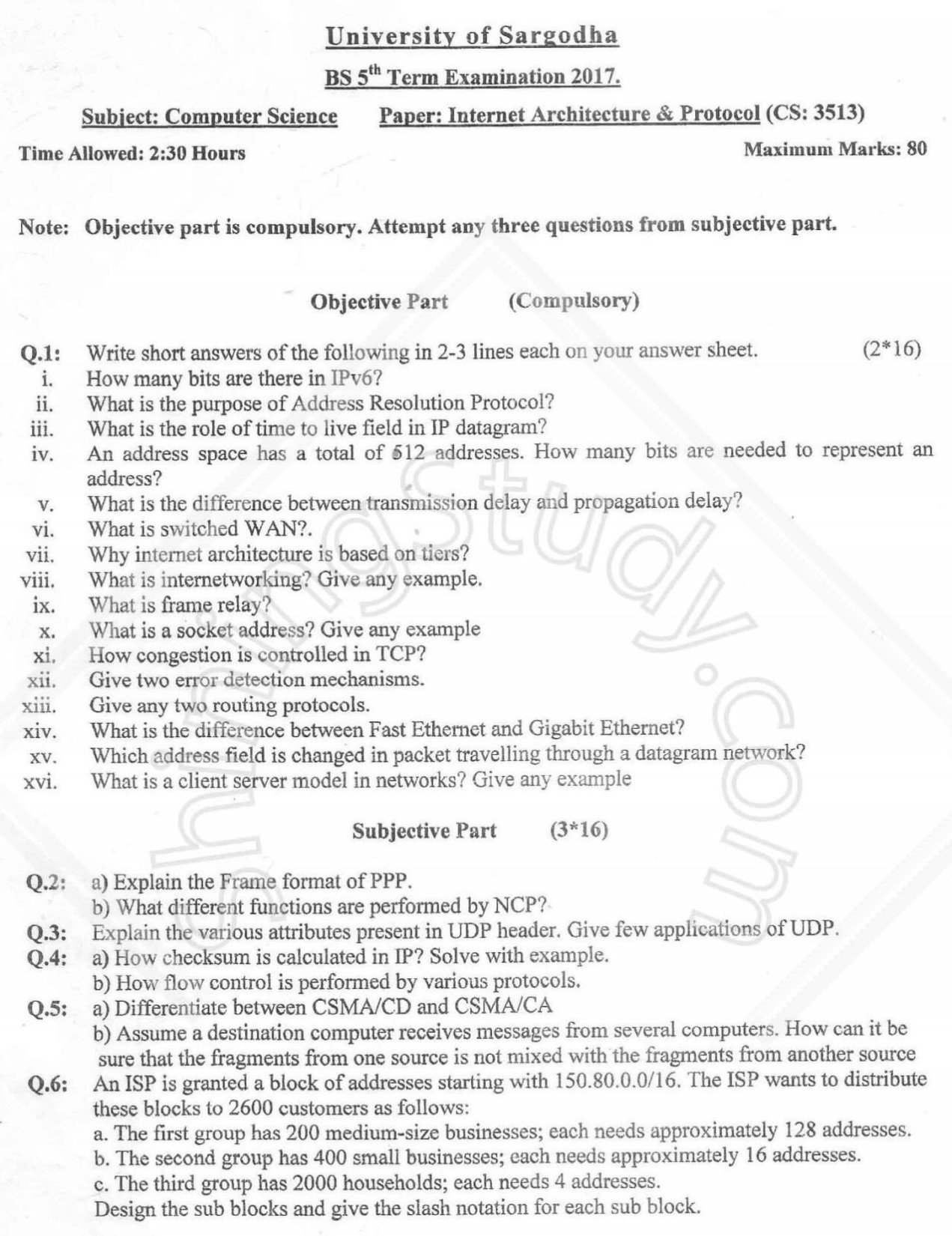Internet Architecture Protocol BSCS 5th Term Past Paper 2017 UOS

University of Sargodha
BS 5th Term Examination 2017
Subject: Computer Science
Paper: Internet Architecture & Protocol (CS: 3513)
Time Allowed: 2:30 Hours
Maximum Marks: 80
Objective Part (Compulsory)
Q.1: Write short answers of the following in 2-3 lines each on your answer sheet. (2*16)
i. How many bits are there in IPv6?
ii. What is the purpose of Address Resolution Protocol?
iii. What is the role of time to live field in IP datagram?
iv. An address space has a total of 512 addresses. How many bits are needed to represent an address?
v. What is the difference between transmission delay and propagation delay?
vi. What is switched WAN?
vii. Why internet architecture is based on tiers?
viii. What is internetworking? Give any example.
ix. What is frame relay?
x. What is a socket address? Give any example.
xi. How congestion is controlled in TCP?
xii. Give two error detection mechanisms.
xiii. What is the difference between Fast Ethernet and Gigabit Ethernet?
xiv. Which address field is changed in packet travelling through a datagram network?
xv. What is a client-server model in networks? Give any example.
Subjective Part (3*16)
Q.2:
a) Explain the Frame format of PPP.
b) What different functions are performed by NCP?
Q.3: Explain the various attributes present in UDP header. Give few applications of UDP.
Q.4:
a) How checksum is calculated in IP? Solve with example.
b) How flow control is performed by various protocols.
Q.5:
a) Differentiate between CSMA/CD and CSMA/CA.
b) Assume a destination computer receives messages from several computers. How can it be sure that the fragments from one source is not mixed with the fragments from another source?
Q.6: An ISP is granted a block of addresses starting with 150.80.0.0/16. The ISP wants to distribute these blocks to 2600 customers as follows:
a. The first group has 200 medium-size businesses; each needs approximately 128 addresses.
b. The second group has 400 small businesses; each needs approximately 16 addresses.
c. The third group has 1900 households; each needs 4 addresses.
Design the sub blocks and give the slash notation for each sub block.
